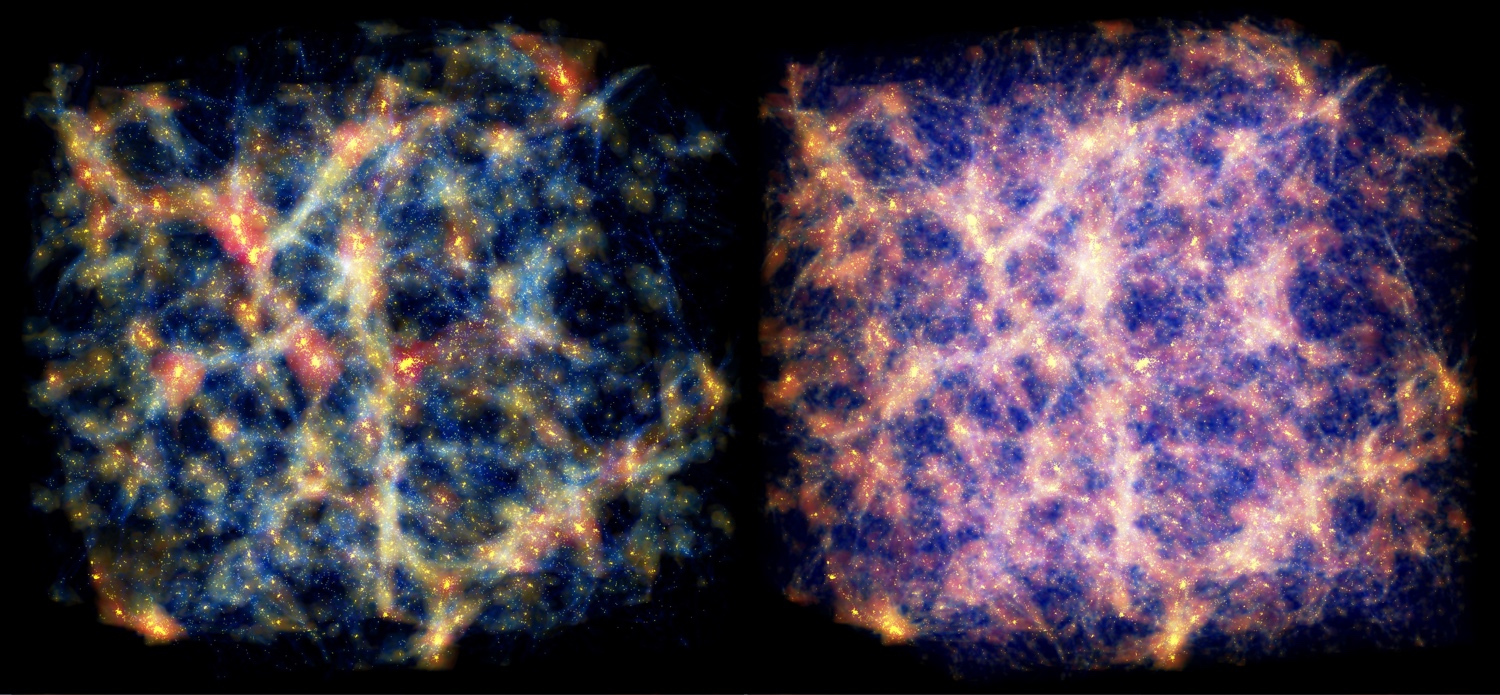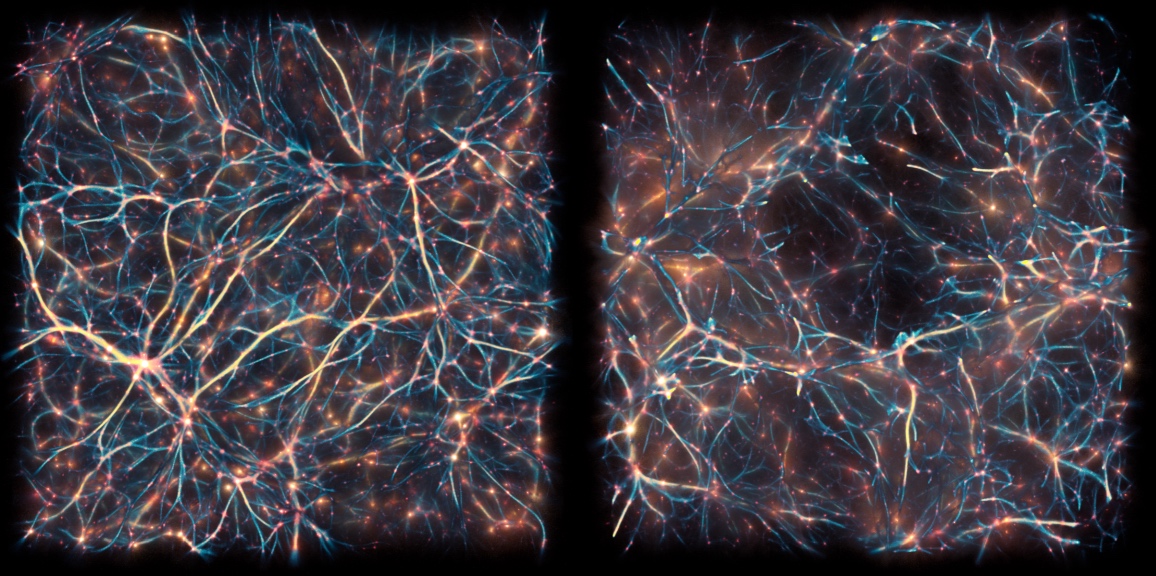The Creative Coding Lab is moving to Purdue University in Fall 2022! This website will no longer be updated. Please visit https://angusforbes.com for more information.
Researchers from the Monterey Bay Aquarium Research Institute (Dr. Kakani Katija) and the Computational Media Department (Dr. Angus Forbes and Dr. Leila Takayama) receive an NSF Convergence Accelerator award from the National Science Foundation to support the project Ocean Vision AI: Scaling Up Visual Observations of Life in the Ocean Using Artificial Intelligence.
Jeffrey Weekly is presenting his talk At a Distance: The Use of the Nautilus Hyper-converged Cluster for Advanced Visualization and Collaboration in CAVEs and WAVEs at CAAV’21, Visualization from a Distance on November 4th at Purdue University.
Oskar Elek is chairing the Data Across Boundaries workshop during the CROSS Research Symposium on October 14th at 9:45am. Featured speakers include Dr. Jing Zhu (computational genomics), Dr. Matthew J. Turk (astrophysics), Dr. Alexander Bock (astronomy, astrographics), and Jessica Kendall-Bar (marine biology).
Congratulations Oskar! Oskar Elek received the CROSS Incubator Fellowship from the UCSC Center for Research in Open Source Software to develop interactive data science tools.
Angus Forbes is serving as chair of the ACM SIGGRAPH 2021 Art Gallery program.
Congrats to Issei Mori and Oskar Elek! Their interactive visualization project Physarum Telum was awarded “Best in Show“ at the Conference on Artificial Life (ALife’21).
CMPM 204, Computational Media Projects, is being taught by Angus Forbes on Tuesdays and Thursdays from 1:30pm to 3:05pm in Social Science 2, room 171.
CMPM 150, Digital Audio, is being taught online by Brian Hansen on Tuesday evenings from 5:20pm to 8:45pm.
CMPM 280F, Creative Coding Seminar, led by Angus Forbes, will meet on Wednesday afternoons, time TBD.
Congratulations Manu! Manu Mathew Thomas has accepted an internship position at Intel’s Graphics Processing Research team, where he will conduct research exploring the application of deep learning to real-time rendering.
CMPM 163, Game Graphics & Real-Time Rendering, is being taught online by Oskar Elek on Mondays, Wednesdays, and Fridays from 2:40pm to 3:45pm.
CMPM 151, Algorithmic Music, is being taught online by Brian Hansen on Tuesday and Thursday evenings from 7:10pm to 8:45pm.
CMPM 280F, Creative Coding Seminar, led by Angus Forbes, will meet on Wednesday afternoons at 1:30pm.
David Abramov and Oskar Elek are giving an invited talk at RHytHM: ResearcH using yt Highlights Meeting on December 10th, introducing our astrophysics visualization tools to the yt community.
Angus Forbes is giving an invited talk as part of UT Dallas’ Creative Coding Series on November 6th.
Sarah Frost, Oskar Elek, and Angus Forbes participate in a panel discussion on Data Visualization on November 4th, organized by the Center for Computational Experience and moderated by Prof. Katherine Isbister.
Henry Zhou, Montana Fowler, and Oskar Elek each have their artworks accepted to the In These Uncertain Times exhibition at the Santa Cruz Museum of Art & History (the MAH), opening later this year.
Our submission to the IEEE VIS Workshop on Visualization in Astrophysics (VisAstro) won 1st place in the Visualizing the Cosmic Web Data Challenge! Our entry, Volumetric reconstruction for interactive analysis of the Cosmic Web, co-authored by Joseph Burchett, David Abramov, Oskar Elek, and Angus Forbes, features our Polyphorm and CosmoVis visualization software.
Our paper introducing the QW-Net architecture, A reduced-precision network for image reconstruction, developed by first author Manu Mathew Thomas in collaboration with Intel researchers Karthik Vaidyanathan and Gabor Liktor, is accepted to ACM SIGGRAPH Asia and will published in ACM Transactions on Graphics later this year.
Our collaboration with the the Department of Astronomy and Astrophysics, Polyphorm: Structural analysis of cosmological datasets via interactive Physarum Polycephalum visualization, is accepted to IEEE VIS. It will be presented by Oskar Elek in October as part of the main conference (in the SciVis track), and published in IEEE Transactions on Visualization and Computer Graphics early next year.
Jasmine Otto’s article Entering the design space of digital portraiture: A case study in avatar creation tools is accepted to the ICCC Casual Creators Workshop, to be presented on September 8th at 8:50am.
An article describing our software application for exploring patterns in spectroscopy data, titled Quasar Spectroscopy Sound: Analyzing intergalactic and circumgalactic media via data sonification, is accepted for publication in the Journal of the Audio Engineering Society (JAES). The QSS software was developed by lead authors Brian Hansen and Joseph N. Burchett.
The Creative Coding Lab is working with multidisciplinary digital media artist George Legrady on an installation that will be featured as part of the CAFA Art Museums’s Techne Triennial next year. Montana Folwer and David Abramov will help to create an updated version of Legrady’s Voice of Sisyphus project, originally developed in 2011 in collaboration with Ryan McGee and Joshua Dickinson.
Our paper Bio-inspired structure identification in language embeddings is accepted to the IEEE VIS Workshop on Visualization for Digital Humanities, where it will be jointly presented by lead authors Henry Zhou and Oskar Elek.
Joe Burchett and Angus Forbes will be giving an invited talk titled “Visualizing Extragalactic Ecosystems” at the IEEE VIS Workshop on Visualization in Astrophysics on October 26th.
Work exploring the contribution of intergalactic media to the dispersion measure from a fast radio burst that uses the MCPM data reconstuction method developed by Creative Coding researcher Oskar Elek, titled Disentangling the Cosmic Web Towards FRB 190608, is accepted for publication in The Astrophysical Journal Letters.
Angus Forbes’ article Creative AI: From expressive mimicry to critical inquiry is published in the journal Artnodes.
CMPM 35, Data Structures for Interactive Media, is being taught by Angus Forbes on Tuesdays and Thursdays from 11:40am to 1:25pm. Due to the impact of COVID-19, the course will be accessible online.
CMPM 201, Computational Media Theory, is being taught by Angus Forbes on Tuesdays and Thursdays from 3:20pm to 4:55pm.
Congratulations Manu! Manu Mathew Thomas has accepted an internship position at Intel’s Graphics Processing Research team, where he will conduct research exploring the application of deep learning to real-time rendering.
Two papers are accepted to ACM SIGGRAPH, taking place in Washington, DC in late July. Avital Meshi will present Stepping inside the Classification Cube: An intimate interaction with an AI system and Richard Grillotti will present Resonant Waves: Immersed in geometry as part of the Art Papers track. Both papers will also be published in the Leonardo journal, and Avital Meshi’s project is also discussed in an interview featured on the ACM SIGGRAPH Blog.
Jasmine Otto has both a paper, Procedural montage: A design trace of reflection and refraction, and an artwork, exul mater, accepted to to the Electronic Literature Organization (ELO) Conference and Media Arts Festival.
Oskar Elek is giving a contributed talk on the Monte Carlo Physarum Machine at the ALife conference on July 15th.
CMPM 163, Game Graphics & Real-time Rendering, is being taught by Oskar Elek on Tuesdays and Thursdays from 9:50am to 11:25am. Due to the impact of COVID-19, the course and affiliated labs will be accessible online.
CMPM 151, Algorithmic Music for Games, is being taught by Brian Hansen on Tuesdays from 5:20pm to 8:45pm. Due to the impact of COVID-19, the course will be accessible online.
Oskar Elek and Joseph N. Burchett are giving a talk titled “Galaxy Ecosystems in the Cosmic Web Revealed by Slime Mold’s Primitive Intelligence” for the UCSC Annual Postdoc Symposium at 1:20pm on March 5th in the UCSC Cowell Ranch Hay Barn.
Luis Cataldi of Epic Games visits the Creative Coding Lab on February 13th to meet with students and to introduce new features of the Unreal Engine.
Congratulations Cassia! Cassia Artanegara has accepted a full-time position as a UX researcher at Good Research.
Our collaboration with the Department of Astrophysics and Astronomy on tracing dark matter filaments using a computational model inspired by Physarum polycephalum slime mold, titled Revealing the dark threads of the Cosmic Web is accepted for publication in Astrophysical Journal Letters. The first authors of the paper are Joseph N. Burchett and Oskar Elek.
Montana Fowler will present her work Capturing large-scale artifacts via reflectance transformation imaging with a drone at Museums and the Web 2020 on March 31st.
Welcome Ana Sofia and Alejandro! Anna Sofia Frattini and Alejandro Caldero join the Creative Coding Lab as visiting scholars as part of an international exchange program with the Universidad de Los Andes in Bogota, Colombia.
Avital Meshi’s project Classification Cube is selected for the NeurIPS Workshop on Machine Learning for Creativity and Design’s AI Art Gallery.
CMPM 202, a graduate seminar in Computational Media Research, is being taught by Angus Forbes on Tuesdays and Thursdays from 9:50am to 11:25am in Kresge College (KC), room 325.
Welcome Henry, Montana, Jeffrey, Kapil, and Bryan! Henry Zhou, Montana Fowler, Jeffrey Weekley, Kapil Gupta, and Bryan Chao join the Creative Coding lab to pursue a variety of research topics in visualization, graphics, virtual reality, and machine learning.
Cassia Artanegara and Angus Forbes are awarded Best Poster at the BioVis Challenges Workshop at IEEE VIS 2019 for their work RasVis: Redesigning pathways to support analyses of experimental data, developed in collaboration with the Daniel Kim Lab of the UCSC Genomics Institute.
Three papers are accepted to IEEE VIS 2019, taking place in Vancouver, Canada in October. David Abramov will present RuleVis: Constructing patterns and rules for rule-based models and Ran Xu will present TempoCave: Visualizing dynamic connectome datasets to support cognitive behavioral therapy during the main conference’s short papers session, and Mahika Dubey will present Data brushes: Interactive style transfer for data art at the IEEE VIS Arts Program (VISAP) papers session.
Angus Forbes is giving a keynote presentation at the International Conference on Dance Data, Cognition, and Multimodal Communication (DDCMC’19) in Lisbon, Portugal on September 21st.
The Creative Coding Lab receives funding from Colciencas and the U.S. Department of State’s 100,000 Strong in the Americas Innovation Fund program. The project, Information Visualization and Digital Fabrication with Applications to Creative Industries, will support international exchange with the Universidad de Los Andes in Colombia.
The Creative Coding Lab and the Department of Astronomy and Astrophysics receive a Hubble Space Telescope Theory award from the Space Telescope Science Institute (STScI). Researchers from UCSC will collaborate with astrophysicists from Caltech, CU Boulder, UCSB, and SDSU to develop CosmoVis, a novel visual analytics platform to explore hydrodynamic simulation datasets and analyze intergalactic and circumgalactic media.
Two papers are accepted to the IEEE Global Humanitarian Technology Conference (GHTC), taking place in Seattle, Washington. Mahika Dubey will present Predicting biker density at bikeshare station intersections in San Francisco and Sarah Frost will present CompostNet: An image classifier for meal waste on October 17th.
CMPM 164, Game Engines, is being taught by Angus Forbes on Mondays, Wednesdays, and Fridays from 1:20pm to 2:25pm in Physical Sciences (PSB), room 114.



